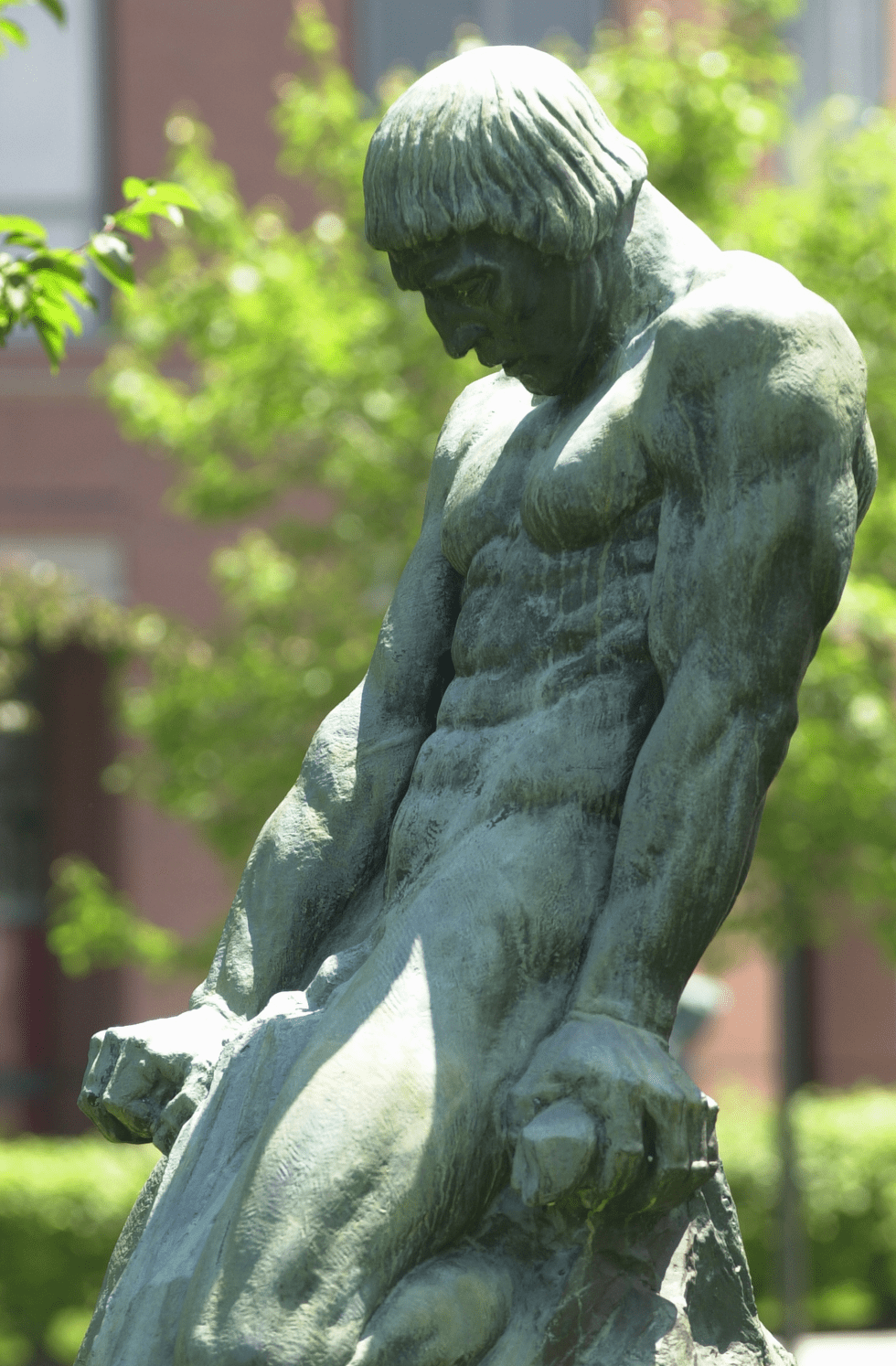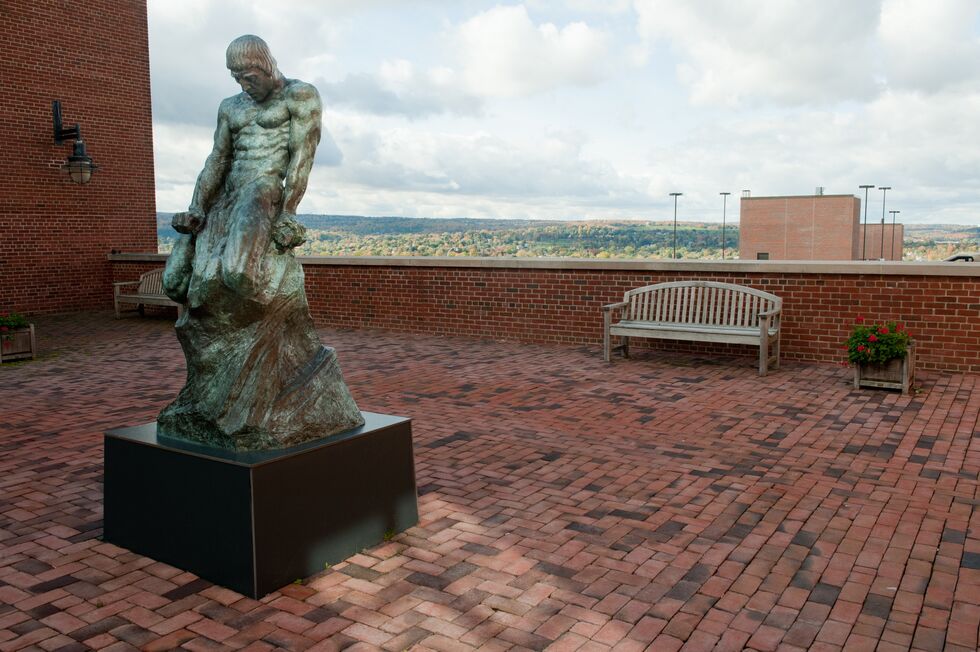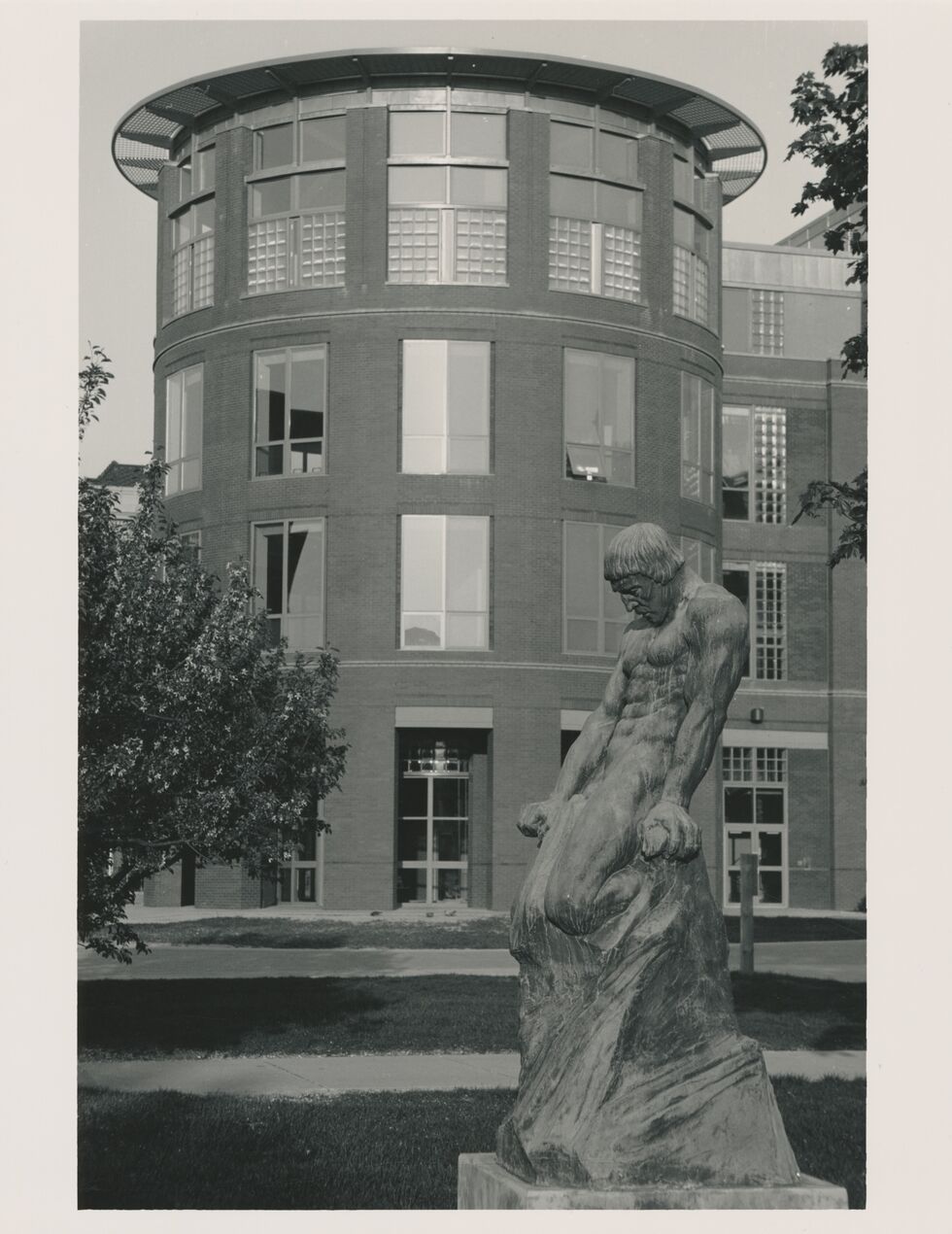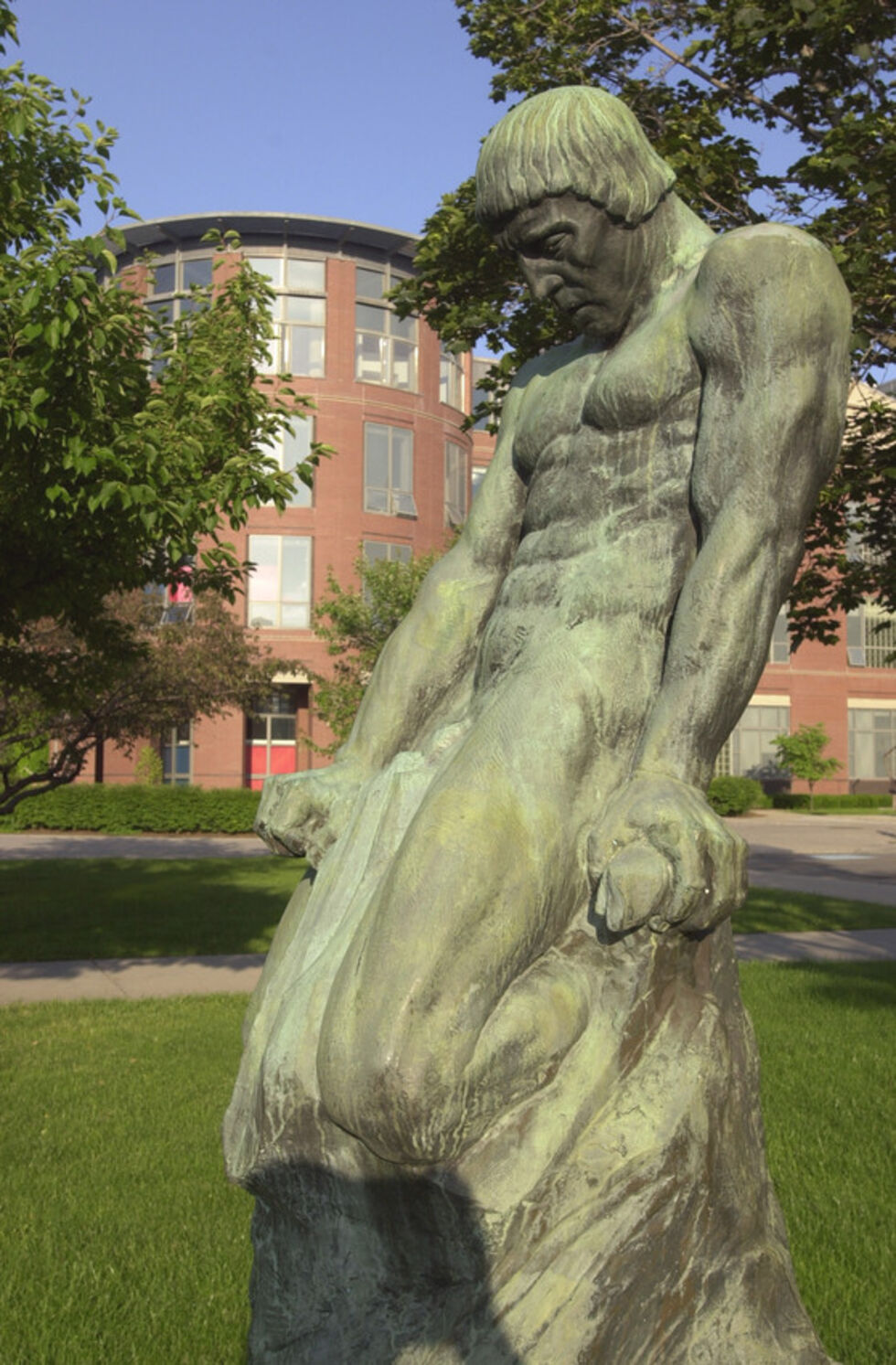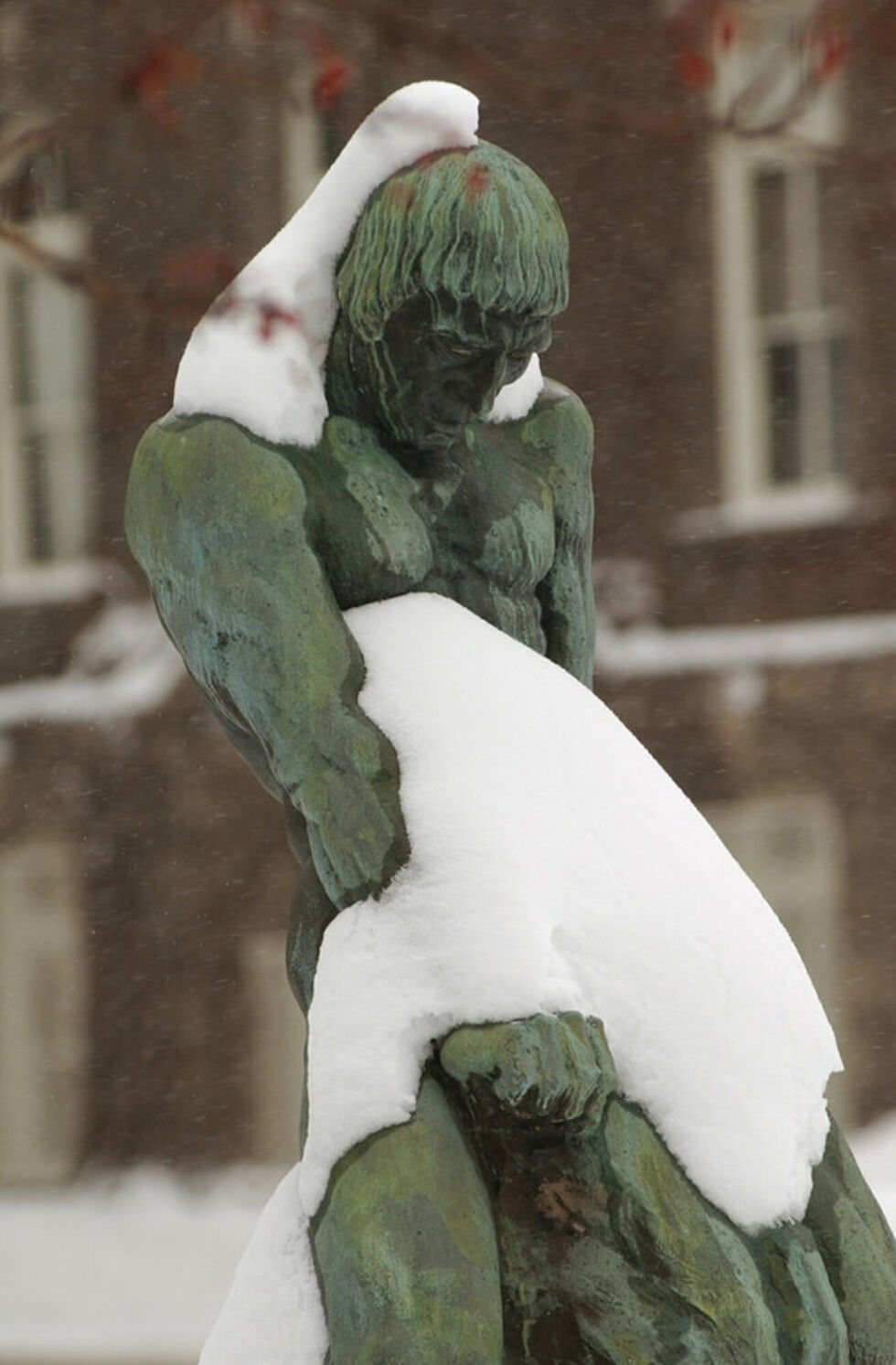Elemental Man
"Elemental Man" by Malvina Hoffman , 1936
Elemental Man is a bronze sculpture created by American artist Malvina Hoffman. Elemental Man is located on the Falk College Patio, between White and MacNaughton Halls. The sculpture rests on a square concrete base and stands 6 feet 4 inches tall. Elemental Man depicts a nude male figure kneeling and attempting to free himself from a rock in which his feet are still embedded. The sculpture portrays humanity’s strength to conquer our surroundings.
Hoffman’s work is known for its naturalistic style and attention to detail as well as its broad subject matter and psychological interests. Hoffman first exhibited Elemental Man at the New York World’s Fair in 1939 and the sculpture received worldwide attention. Syracuse University purchased Elemental Man in 1964. The sculpture was installed in 1965 and originally placed in the courtyard between the Hall of Languages and Crouse Hall.
Malvina Hoffman was born June 15, 1885 in New York City. Malvina Hoffman is the daughter of Richard Hoffman, a concert pianist and composer, and Fidelia Hoffman, also a pianist. Her parents encouraged her to study art at a young age. Initially, she studied painting with John White Alexander, an American portrait painter and illustrator, but soon transitioned to sculpting. The first sculpture was of her father, which she completed two weeks before his death in 1909. It was exhibited the following year at the National Academy in New York. After his passing, Malvina and her mother moved to Europe, visiting London, Italy and Paris. During her visit in London, she attended the ballet and was highly influenced by the motion and control exhibited by dancers Mikhail Mordkin and Anna Pavlova. Upon settling in Paris, Malvina was accepted, after several failed attempts, to study under Auguste Rodin, the famed French sculptor. From 1910-1917, Hoffman studied and honed her skills in bronze casting, chasing and finishing at foundries. During World War I, Hoffman served as the director of the National and Foreign Information Service of the Red Cross, she remained active with the Red Cross throughout her lifetime. Through the 1920’s her reputation grew along with many prestigious commissions, including The Bush House in London, two monumental sculptures standing 80 feet high. Perhaps her most famous commission was The Races of Man for Chicago’s Field Museum. For this work, she created 104 bronze sculptures and spent a year traveling the world in preparation for the exhibit. Malvina became well-known for her life-size bronze sculptures, particularly sculptures of dancers and culturally diverse people, but she also worked in plaster and marble. She was elected into the National Academy of Design as an Associate member and became a full Academician in 1931. In 1939, Hoffman authored the book, Sculpture Inside and Out, focusing on historical and technical aspects of bronze casting. Then in 1948, Hoffman created relief sculptures for the wall display at the American World War II Memorial for the Epinal American Cemetery and Memorial in Vosges, France.
SU University Archives; "Elemental Man." Smithsonian American Art Museum website; "Art on Campus - Elemental Man." SU Art Galleries; “University Given 1939 Fair Statue” news clipping dated January 22, 1965 from SU University Archives; Sicherman, B., & Green, C. H. (Eds.). (1980). Notable American women: the modern period: a biographical dictionary. Harvard University Press; Heller, J., & Heller, N. G. (Eds.). (2013). North American Women Artists of the Twentieth Century: A Biographical Dictionary. Routledge' Kort, C., & Sonneborn, L. (2014). A to Z of American Women in the Visual Arts. Infobase Publishing; Calvin, P. E., & Deacon, D. A. (2011). American Women Artists in Wartime, 1776-2010. McFarland; "Anna Pavlova, Malvina Hoffman." Arts and Activities; SU Photo and Imaging Center.
